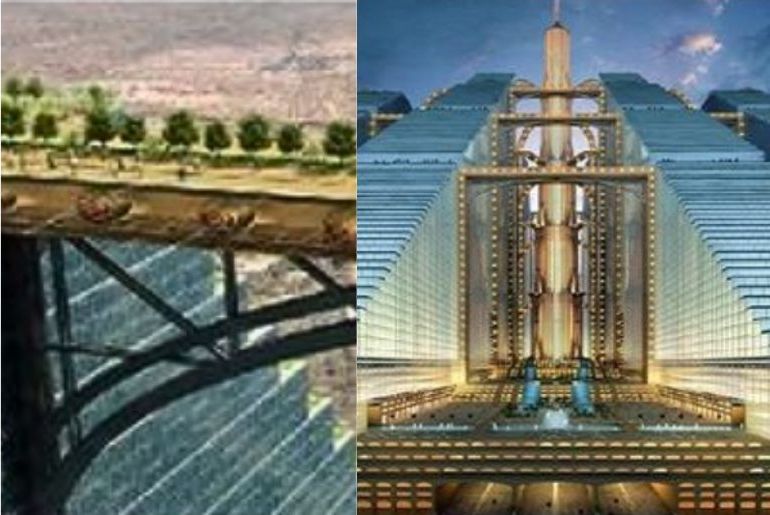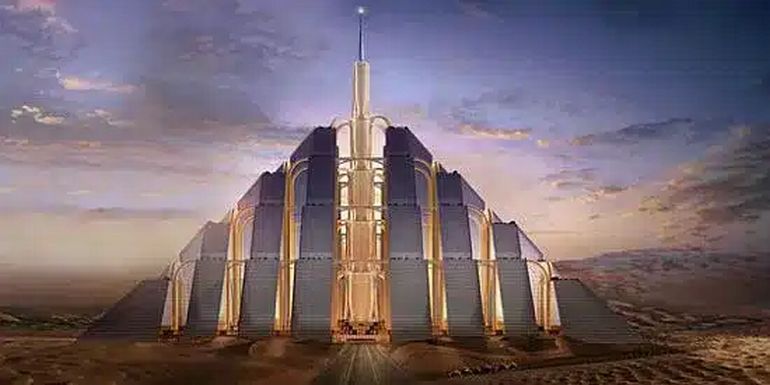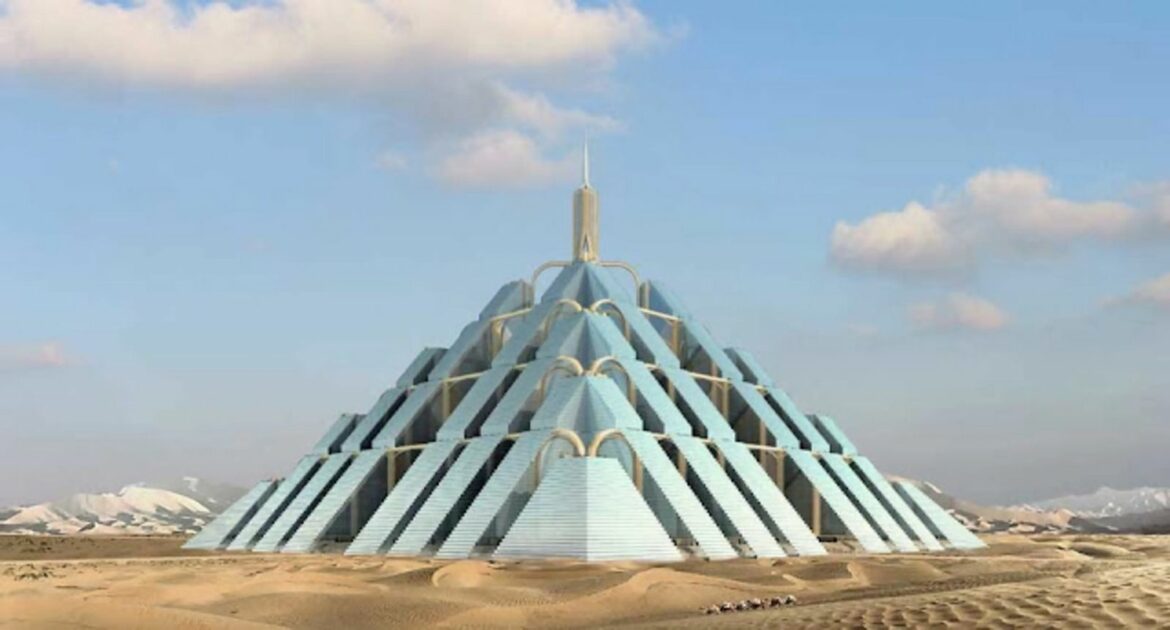While the world continues to swoon over Saudi Arabia’s ambitious projects like Neom City and its incredible segments like The Line, Trojena, Sindalah, something of a similar scale and vision had brewed in Dubai in 2008. Not many are aware that the glitzy Emirate had plans to build Ziggurat, an environmentally sustainable futuristic city housed inside a pyramid. Sounds outlandish, right? That was just the tip of the iceberg or should I say pyramid? The city, akin to Neom, was based entirely on renewable sources of energy and was touted to be home to no fewer than a million people.

Dubai-based environmental design company Timelinks conjured the plans for the 2.3 square kilometer building that permitted no cars and deployed a 360-degree monorail network that would help residents commute not only horizontally but also vertically. Timelinks patented the design and technology incorporated into the project, which featured biometrics for residents to enter their homes. With facial recognition, an advanced and personalized security system was in place, which Dubai is anyway well-known for. Inspired by the pyramids of the Egyptians and Mayans, Ziggurat was to go into construction in 2021 and was meant to be completed by 2028.

The 1,200 meters tall structure would dwarf Dubai’s iconic Burj Khalifa with 300 floors of residential, commercial, and recreational spaces. “Ziggurat communities can be almost totally self-sufficient energy-wise. Apart from using steam power in the building, we will also employ wind turbine technology to harness natural energy resources. Whole cities can be accommodated in complexes which take up less than 10% of the original land surface. Public and private landscaping will be used for leisure pursuits or irrigated as agricultural land,” said Timelinks, MD, Ridas Matonis, per Inhabitat.

He added, “If these projects were realized today, the world would see communities that are sustainable, environmentally friendly, and in tune with their natural surroundings.”

What went wrong?
A nearly 4000 feet tall structure with glass walls and spread across 2.3 square kilometers housing 1 million people sounds like an enormous task. After the initial proposal in 2008, there was no further information. It also lacked an evident absence of modularity that would allow the building to expand or be altered with changing times. Its unusualness would make it difficult to pull off simple tasks like changing windows, electrical works, that are a cakewalk in typical modular buildings, where box-shaped sections come complete with electrical, hydraulic, and other systems already installed.
In 2008, 26 years ago, the technology that exists today was missing. Even today, megaprojects like Crown Prince MBS’s The Line in $1 trillion Neom City are brushed off as an exceedingly ambitious vision of an overachieving prince with an insane backup of wealth. Despite regular visual updates, detractors find it hard to believe The Line will ever see the light of the day and even if it does, it will take a whopping 50 years to complete. Unlike Ziggurat’s monorail network, The Line that will also run on 100% renewable energy boasts an advanced public transportation system.
High-speed rail with an end-to-end journey time of 20 minutes will help residents move around the futuristic city that will extend for 160 kilometers.

While Dubai’s Ziggurat glass pyramid never saw the light of the day, work at Saudi Arabia’s ‘The Line’ is on in full swing.

